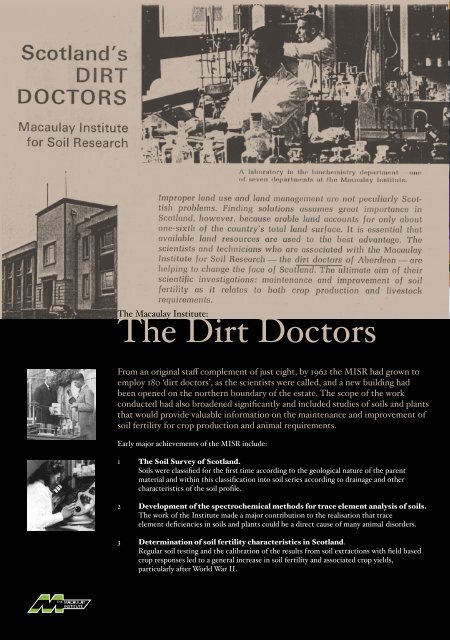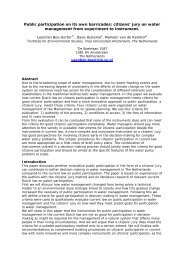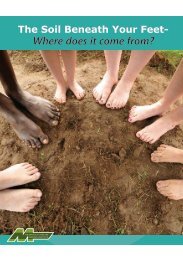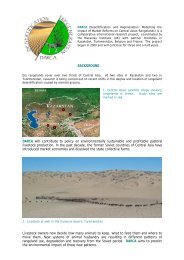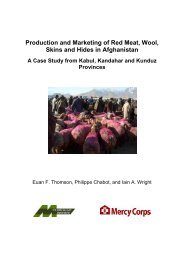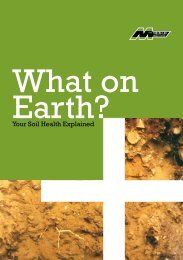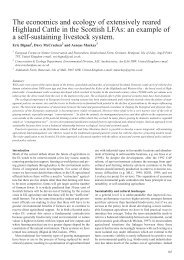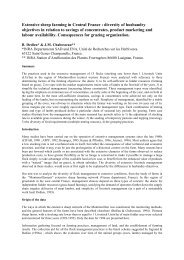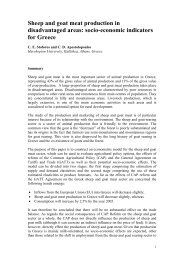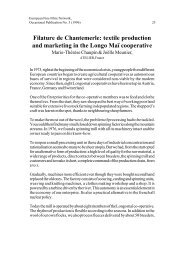Dr Thomas Bassett Macaulay - The Macaulay Land Use Research ...
Dr Thomas Bassett Macaulay - The Macaulay Land Use Research ...
Dr Thomas Bassett Macaulay - The Macaulay Land Use Research ...
You also want an ePaper? Increase the reach of your titles
YUMPU automatically turns print PDFs into web optimized ePapers that Google loves.
<strong>The</strong> <strong>Macaulay</strong> Institute:<br />
<strong>The</strong> Dirt Doctors<br />
From an original staff complement of just eight, by 1962 the MISR had grown to<br />
employ 180 ‘dirt doctors’, as the scientists were called, and a new building had<br />
been opened on the northern boundary of the estate. <strong>The</strong> scope of the work<br />
conducted had also broadened significantly and included studies of soils and plants<br />
that would provide valuable information on the maintenance and improvement of<br />
soil fertility for crop production and animal requirements.<br />
Early major achievements of the MISR include:<br />
1 <strong>The</strong> Soil Survey of Scotland.<br />
Soils were classified for the first time according to the geological nature of the parent<br />
material and within this classification into soil series according to drainage and other<br />
characteristics of the soil profile.<br />
2 Development of the spectrochemical methods for trace element analysis of soils.<br />
<strong>The</strong> work of the Institute made a major contribution to the realisation that trace<br />
element deficiencies in soils and plants could be a direct cause of many animal disorders.<br />
3 Determination of soil fertility characteristics in Scotland.<br />
Regular soil testing and the calibration of the results from soil extractions with field based<br />
crop responses led to a general increase in soil fertility and associated crop yields,<br />
particularly after World War II.<br />
<strong>The</strong> <strong>Macaulay</strong> Institute:<br />
Into <strong>The</strong> 21 st Century<br />
<strong>The</strong> Institute in its current form was founded in April 1987 by the merger of the<br />
<strong>Macaulay</strong> Institute for Soil <strong>Research</strong> and the Hill Farming <strong>Research</strong> Organisation.<br />
Today the <strong>Macaulay</strong> Institute, as it is now known, is the largest interdisciplinary<br />
research organisation of its kind in Europe.<br />
<strong>The</strong> Institute mission is:<br />
To be an international leader in research on the sustainable use of land and its natural<br />
resources for the benefit of people, their communities and the environment.<br />
<strong>The</strong> 300 staff and postgraduate students are drawn from over 25 countries, and conduct research in<br />
Scotland, across Europe and internationally, with a wide range of partner organisations.<br />
<strong>The</strong> Institute goal is that the research undertaken provides evidence that will help shape future<br />
environmental and rural-development policy both in Scotland and internationally.<br />
“I am delighted to say that more than three quarters of a century after<br />
it was established, the <strong>Macaulay</strong> Institute continues to develop its<br />
research activities building on T.B. <strong>Macaulay</strong>’s vision for improving the<br />
communities and environment of rural Scotland.”<br />
Professor Richard Aspinall<br />
Chief Executive of the <strong>Macaulay</strong> Institute<br />
Since 2006


